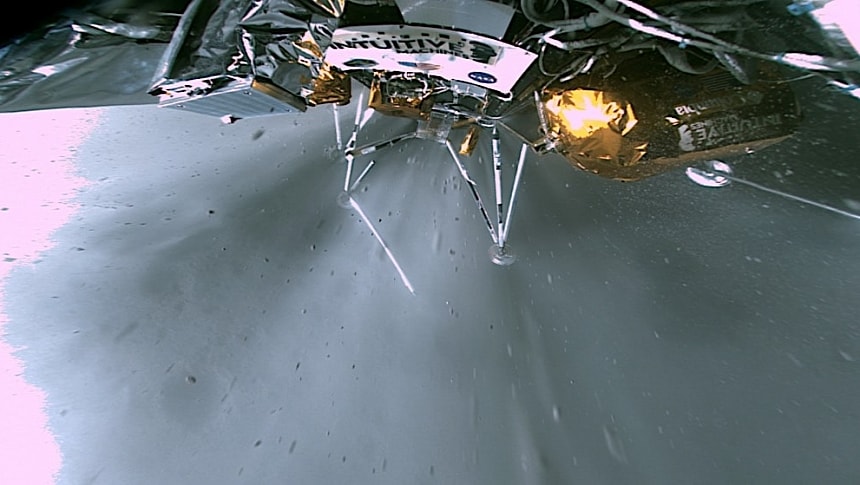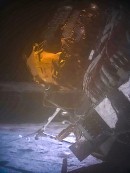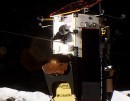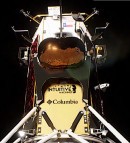On February 22 the first American mission to the Moon in over 50 years reached its destination, setting down the Nova-C Odysseus lander in the Malapert A region of the satellite's South Pole. It was not a perfect landing, but it was good enough to allow all the science instruments sent up there to work as advertised.
It took NASA and Intuitive Machines, the company that made the Odysseus, almost a week after the landing to get their bearings and decide to let the world know what they'd accomplished.
In a press conference held on February 27, the space agency and its partner company basically called the mission a success, opening the doors to some truly exciting news from the Moon in the near future.
As most of you already know, the Odysseus lander carried with it a total of 12 science instruments, six of them sent to the Moon by private partners, and another six by the American space agency itself. It's NASA's gear status that was addressed this week, and the news couldn't be merrier.
As per the people behind the mission, despite tipping over a bit while landing (Intuitive Machines calls the slight deviation from a perfect landing a gentle lean), the piece of hardware still allowed the activation and operation of all NASA cargo.
The mission has already generated some 350 megabits of data, which have already been received by Earth and are currently getting ready to be analyzed. That data includes guidance and navigation information that will "help improve landing precision in the future," but also the first images from the surface of the Moon captured by American cameras in more than half a century.
The images show rather undistinguishable bits of Malapert A, but also the orientation of the lander (check the attached gallery for that), which, despite being far from perfect, still preserves its ability to "return scientific data."
The successful launch and landing of the Odysseus marked an important moment in NASA's history, as it became the first mission of the Commercial Lunar Payload Services (CLPS) program to be completed.
That honor was reserved for the first mission of the program, the one that sent the Astrobotic Peregrine into space. That mission failed at the beginning of the year, opening the doors for the Intuitive Machines' effort to snatch the crown.
There is one more CLPS mission planned for the year, perhaps the most important of them all. Sometime in November, a Falcon Heavy rocket will take to space and on to the Moon "the largest and heaviest payload delivered by a CLPS provider," the VIPER rover.
Until that happens we'll keep an eye out for more Odysseus developments as we wait to see what that trove of data already received means for space exploration efforts.
In a press conference held on February 27, the space agency and its partner company basically called the mission a success, opening the doors to some truly exciting news from the Moon in the near future.
As most of you already know, the Odysseus lander carried with it a total of 12 science instruments, six of them sent to the Moon by private partners, and another six by the American space agency itself. It's NASA's gear status that was addressed this week, and the news couldn't be merrier.
As per the people behind the mission, despite tipping over a bit while landing (Intuitive Machines calls the slight deviation from a perfect landing a gentle lean), the piece of hardware still allowed the activation and operation of all NASA cargo.
The mission has already generated some 350 megabits of data, which have already been received by Earth and are currently getting ready to be analyzed. That data includes guidance and navigation information that will "help improve landing precision in the future," but also the first images from the surface of the Moon captured by American cameras in more than half a century.
The images show rather undistinguishable bits of Malapert A, but also the orientation of the lander (check the attached gallery for that), which, despite being far from perfect, still preserves its ability to "return scientific data."
The successful launch and landing of the Odysseus marked an important moment in NASA's history, as it became the first mission of the Commercial Lunar Payload Services (CLPS) program to be completed.
That honor was reserved for the first mission of the program, the one that sent the Astrobotic Peregrine into space. That mission failed at the beginning of the year, opening the doors for the Intuitive Machines' effort to snatch the crown.
There is one more CLPS mission planned for the year, perhaps the most important of them all. Sometime in November, a Falcon Heavy rocket will take to space and on to the Moon "the largest and heaviest payload delivered by a CLPS provider," the VIPER rover.
Until that happens we'll keep an eye out for more Odysseus developments as we wait to see what that trove of data already received means for space exploration efforts.



















